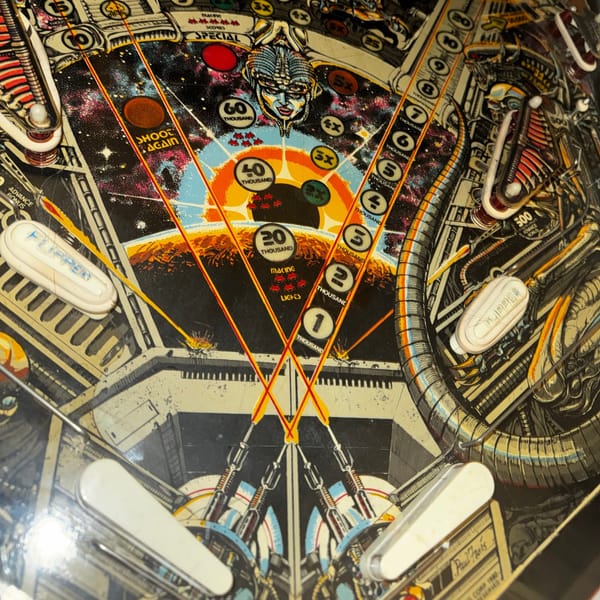The Most Useful Concept You’ve Never Heard Of
That door you pulled the wrong way? That wasn’t your fault. It was bad affordance design. Let’s talk about the hidden rules that shape the world.

Ever walked up to a door, pulled when you should have pushed, and felt that brief flash of embarrassment? Maybe even muttered something under your breath like, “Well that was dumb,” as you realize the sign says otherwise. But here’s the thing: that wasn’t your fault. It was the door’s fault. Or more precisely, the fault of how it was designed. There’s a word for why that moment felt so clumsy—and why some things are easy to use without instructions while others make us feel like we missed a step. That word is affordance.
It might sound like design jargon, but affordances are all around you. Every day. Right now, in fact, you’re surrounded by them. Your coffee mug. Your phone screen. That button you’re tempted to click. Affordances are the silent signals that tell us what to do next. And once you know what they are, you start to notice how elegantly—or poorly—things are built for human use.
What’s an Affordance, Anyway?
Let’s start here: an affordance is a clue. It’s the way an object hints at how it wants to be used. A knob suggests turning. A button invites pressing. A handle asks to be pulled. It’s the design equivalent of body language—silent, intuitive, and powerful when it works well.
The term “affordance” originally came from psychologist James J. Gibson, who used it to describe the possibilities an environment offers to an organism. But it was Don Norman who took that idea and made it matter in design. In his book The Design of Everyday Things, Norman focused not just on what an object can do, but what users think it can do. That’s where things get interesting. If a button doesn’t look like a button, or if a handle suggests pushing but actually requires pulling, the whole system breaks down. What matters is what you see, not what the object can technically do.
This is why good design feels effortless and bad design makes you second-guess yourself.
When Doors Get It Wrong
Let’s talk about doors. They’re boring, right? Just something you use a hundred times a day without thinking. Until you run into one that doesn’t work the way it looks like it should. This is the classic example Norman uses to explain affordances—what we now call a “Norman door.” You push when you’re supposed to pull. Or there’s a giant vertical bar on the door that screams “PUSH,” but it only opens if you pull. These doors aren’t just annoying—they’re broken.
A well-designed door shouldn’t need a sign. A flat metal plate implies pushing. A curved handle says pull me. These are perceived affordances. They don’t require thinking. They don’t need words. They just work because the form suggests the function.
What’s wild is how often we run into bad doors in places where design should be at its best. Glass office doors that look sleek and expensive but confuse everyone. Doors with handles on both sides, leading to an awkward dance of trial and error. The issue here isn’t the user—it’s the design failing to do its job.
Light Switches and the Weird Logic of Control
Now picture a room with a bunch of light switches in a row. You flip the first one, and the light in the far corner turns on. You try another one, and it lights up the hallway. No logic. No clear pattern. You have to memorize or guess what each switch does.
This isn’t just a nuisance—it’s a design flaw. More specifically, it’s a problem with mapping. In design terms, mapping is the relationship between controls and their effects. The best design puts the controls in a spatial layout that mirrors the real world. If the leftmost switch controls the leftmost light, and so on, your brain instantly gets it. If not, you’re fumbling in the dark. Literally.
It might seem like a minor detail, but this kind of mismatch adds up. In homes, sure, it’s just a small annoyance. But in places where the stakes are higher—like a hospital, or the cockpit of a plane—bad mapping can be dangerous. That’s why affordances and mapping go hand in hand. When one is off, the whole system stumbles.
What Happens When Affordances Go Digital
Physical objects are one thing. But what about software? In digital spaces, affordances are trickier. You can’t rely on physical clues like shape or weight. Instead, you use visual signals. A button should look pressable. A link should lookclickable. If you’re unsure whether something is interactive or static, the interface has failed you.
This is why early computer interfaces worked so well. Remember the old desktop metaphor? Files, folders, trash bins—they borrowed from the physical world, so people understood them instantly. That’s smart affordance design.
But trends changed. Flat design came along. Minimalism became the aesthetic of choice. Suddenly, buttons didn’t look like buttons. Everything was flat and ambiguous. Sometimes you had to hover your mouse just to find out if something was interactive. The clarity was gone.
It’s not just about style. It’s about trust. When you tap something and nothing happens, you stop trusting the interface. And that tiny hesitation chips away at your experience. It’s death by a thousand paper cuts.
The Frustration of Bad Design
Once you learn about affordances, you start to see their absence everywhere. The public soap dispenser that won’t dispense until you wave your hand just right. The motion-sensor sink that makes you do a water dance. The stove with dials that don’t match the layout of the burners. All these things cause friction. They slow you down. And the worst part? You blame yourself.
But it’s not your fault. It never was. The problem isn’t user error—it’s design error. And the cost is more than a few seconds of confusion. It’s a little moment of shame, a microdose of incompetence that you carry with you. Multiply that by hundreds of interactions a day, and you’ve got a world full of unnecessary friction.
Good design, on the other hand, disappears. It feels like second nature. You don’t notice when something works exactly the way you expect it to. But that’s the goal. Design should vanish into the background and just let you do what you came to do.
How to See the World Through Affordance-Tinted Glasses
Once you know about affordances, it’s hard not to see them. They’re everywhere. The indentation on your credit card terminal showing where to insert the chip. The curve of a handle that fits your grip. The way your phone screen subtly suggests a swipe. Even public spaces have them. Benches afford sitting. Wide walkways afford movement. The layout of a room can invite people in or make them want to leave.
This isn’t just a design principle. It’s a lens. A way of understanding how the built world communicates with us. And when you adopt this lens, things start to click. You begin to appreciate the things that work well, and you spot the things that don’t.
If you build things—anything, really—this concept changes how you create. Whether you’re designing a product, writing instructions, or even hosting a meeting, you start to ask: What does this afford? What is it suggesting the user do? Is it helping them or getting in the way?
Design isn’t just about how something looks. It’s about what it lets us do—and how naturally it lets us do it.




